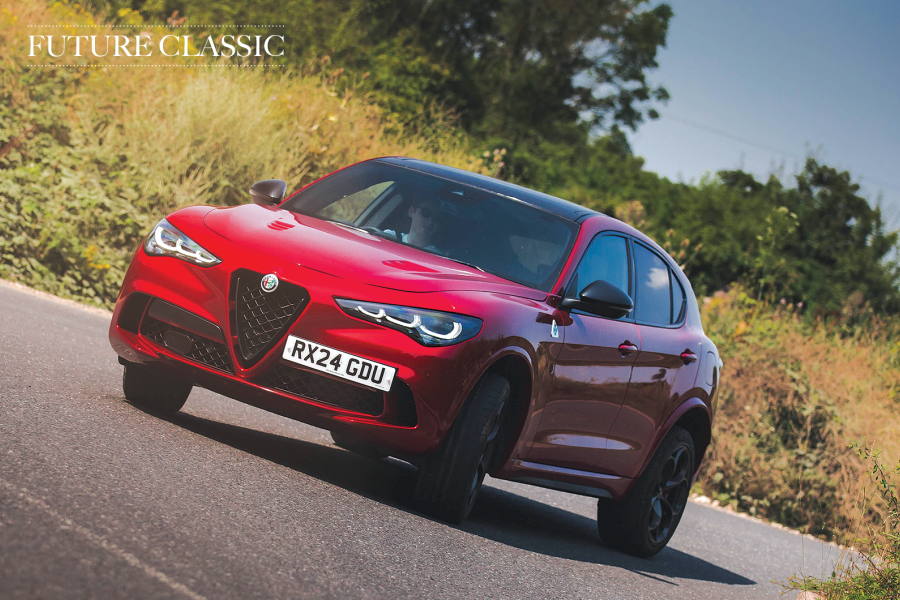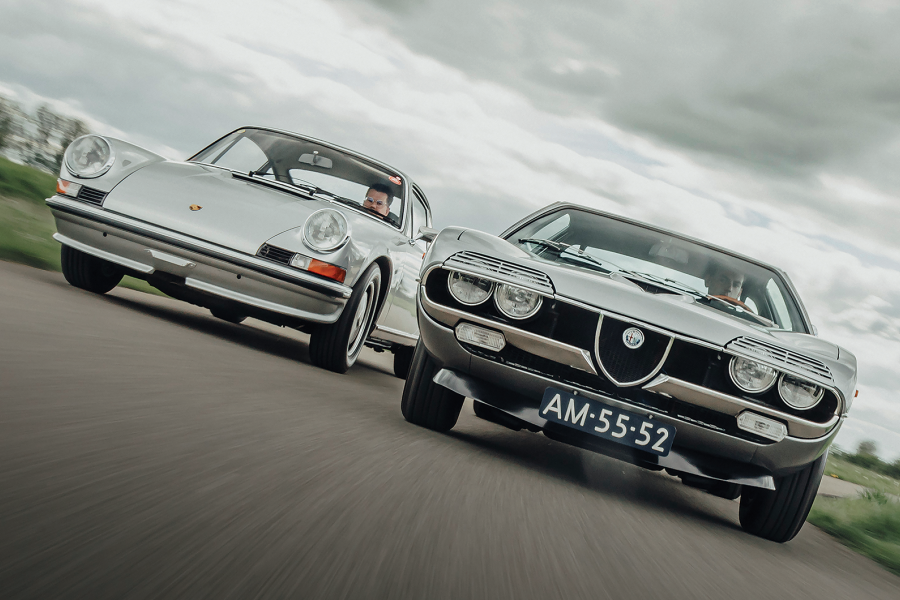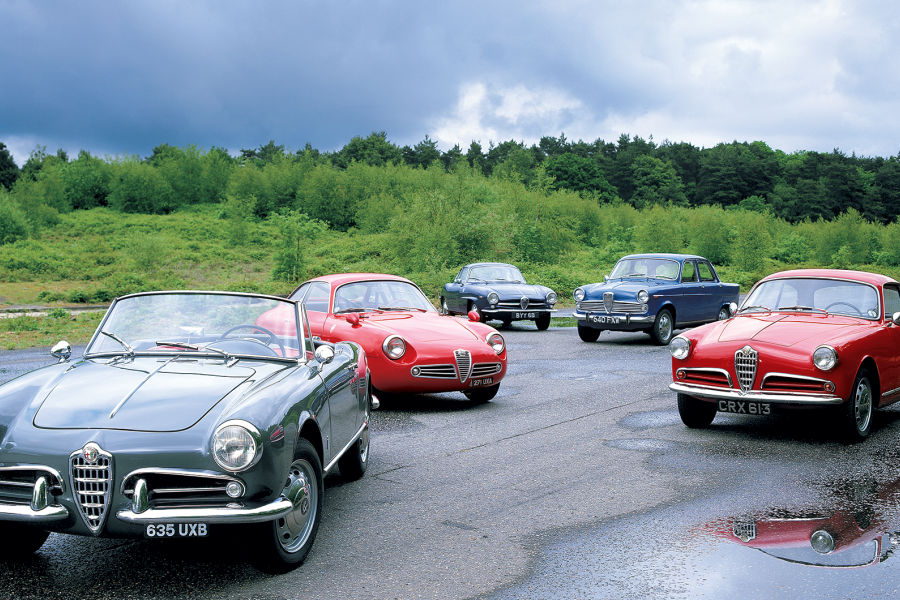At low speeds it feels a bit uninspiring, but floor the pedal and that venerable twin-cam comes to life. Compared to the Sport, the powerband is more toward the mid-range, and this example’s 1750cc engine ups the torque further.
The Fulvia Sport’s V4 powerplant has twin carburettors
The experience benefits from the cabin’s lack of sound deadening, low seating position and the perfect weight of the steering. It’s more exciting and aurally visceral than the Sport, which seems as if it is the more accurate machine but somewhat at the expense of feel.
Only the Junior Z’s damping lets it down a little, certainly in comparison to the dignified ride quality of its rival – a surprise given the Sport’s relatively old-fashioned design.
Even though their methods of delivery are fundamentally different, both cars offer similar driving experiences. The Alfa is more of a blunt sporting instrument, but the Lancia retains a degree of civility while being a great driver’s car.
It is, however, in the aesthetic department that they’ve always been judged – and still are. For a number of decades, both cars suffered in the shadow of their more conventionally attractive siblings.
The front-wheel-drive Lancia features disc brakes all round
Today, their eccentric looks lie at the heart of their unique appeal and, if anything, the Junior Z manages to out-quirk the Lancia.
That said, there’s a certain something about the shape of the Fulvia Sport – to my eyes at least.
If both cars looked like nothing else on the road when they were new, you can multiply that by a factor of 100 today.
Images: James Mann
Thanks to Franco Macri; Tim Heath; Alfa Romeo Owners’ Club; Lancia Motor Club
This was first in our November 2014 magazine; all information was correct at the date of original publication
Lancia wins the on-track battle
Maglioli and Pinto head for a class victory at Sebring in 1969
Zagato-bodied Alfa Romeos had an exceptional history of racing success, stretching back to the Mille Miglia-winning cars of the 1920s, through to the exquisite Giulietta SZ, plus the Giulia-based TZ1 and TZ2 road-racers.
Although seemingly of the same breed, the Junior Z’s Grand Tourer nature – plus the success of the Autodelta GTAs – ensured that it never tasted competitive action other than with privateers.
Over in Turin, Lancia hadn’t gone racing under its own banner since the sale of the company in 1955, and the transfer of the racing team’s material to Ferrari.
Zagato derivatives of the Appia and Flaminia raced in private hands, but the situation changed with the Fulvia.
Between 1967 and ’69, the Milan-based coachbuilder modified 27 Sport models for the HF Squadra Corse factory race team, lightening and strengthening the bodies, before fitting them with HF 1300cc engines.
These Competizione variants would achieve outstanding class wins at the 1969 24 Hours of Daytona and the 12 Hours of Sebring – the latter with an HF 1600 engine fitted – driven by Claudio Maglioli and ‘Lele’ Pinto.
Factfiles
Lancia Fulvia Sport
- Sold/number built 1965-’73/7102 (including 800 1600s)
- Construction all-steel monocoque (early cars had aluminium body panels)
- Engine iron-block, alloy-head, twin-overhead-camshaft 1298cc/1584cc V4, twin Solex carburettors
- Max power 87-103bhp @ 6000rpm/115bhp @ 6200rpm
- Max torque 84-112lb ft @ 4500rpm
- Transmission five-speed manual, FWD
- Suspension: front independent by wishbones, transverse leaf springs rear dead axle, semi-elliptic leaf springs; telescopic dampers, anti-roll bar f/r
- Steering worm and roller
- Brakes discs all round, with servo
- Length 13ft 2in (4013mm)
- Width 5ft 2in (1575mm)
- Height 4ft 2in (1270mm)
- Weight 2015-2120lb (914-962kg)
- 0-60mph 12.7-9.5 secs
- Top speed 100-118mph
- Mpg 22-28
- Price new £1850 (1600, 1973)
Alfa Romeo Junior Zagato
- Sold/number built 1969-’75/1510 (including 402 1600s)
- Construction steel monocoque
- Engine all-alloy, twin-overhead-camshaft 1290cc/1570cc ‘four’, twin Weber carburettors
- Max power 103bhp @ 6000rpm/114bhp @ 5000rpm
- Max torque 101lb ft @ 3200rpm/115lb ft @ 2800rpm
- Transmission five-speed manual, RWD
- Suspension: front independent, by wishbones rear live axle, radius arms; coil springs, anti-roll bar f/r
- Steering worm and roller
- Brakes discs all round
- Length 13ft 1½in-13ft 5½in (4000-4100mm)
- Width 5ft 1in (1549mm)
- Height 4ft 2in (1280mm)
- Weight 2090lb (948kg)
- 0-60mph 13.1-10 secs
- Top speed 105-118mph
- Mpg 26-28
- Price new n/a
READ MORE
A cut above: Alfa GT Junior vs Fiat 124 Sport vs Lancia Fulvia Coupé
The art of Touring: Lancia Flaminia vs Alfa Romeo Spider
Compact quality: Neckar Europa vs Lancia Appia vs Auto Union 1000S vs Saab 96
Ross Alkureishi
Ross Alkureishi is a contributor to Classic & Sports Car






















